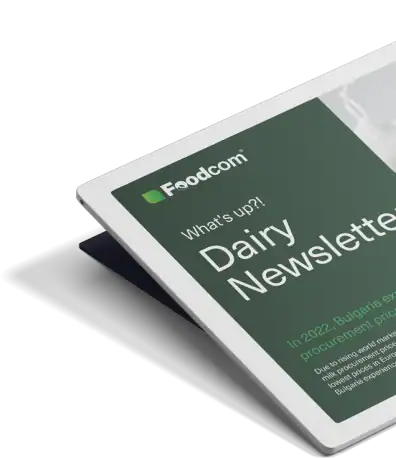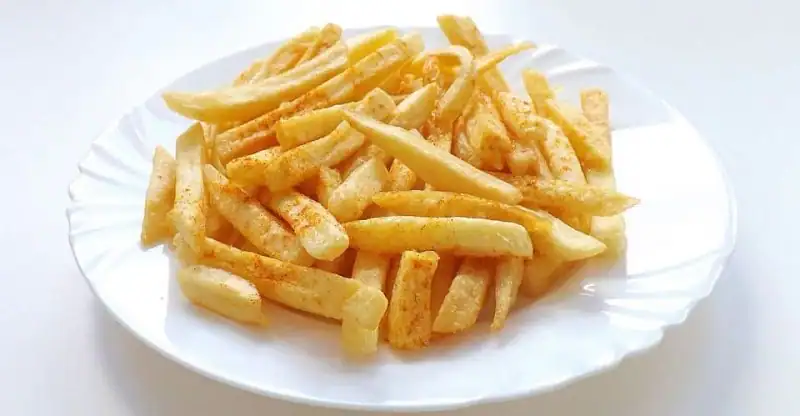What is E1450
E1450, also known as Starch Sodium Octenyl Succinate or starch acetate, is a modified starch used as a food additive. It is produced by treating natural starch—commonly from maize (corn), potato, tapioca, or wheat—with chemicals such as octenyl succinic anhydride to alter its properties. This process changes its structure, making it more stable and versatile than native starch.
Chemically, E1450 is formed by attaching functional groups to the starch molecules, giving it improved resistance to heat, acid, and shear during food processing. It can also help blend ingredients that would not usually mix well, such as oil and water.
The E number system is a European classification used to identify approved food additives. Each E number, including E1450, indicates that the additive has been evaluated for safety and is authorised for use within specific limits. This coding helps manufacturers comply with food regulations and provides consumers with transparent ingredient information across all EU and UK markets.
Common sources for producing E1450 include:
- Maize (corn) starch
- Potato starch
- Tapioca starch
- Wheat starch (requires labelling for gluten-sensitive consumers)
Common Uses of E1450 in the Food Industry

E1450, or starch sodium octenyl succinate, is used widely in food manufacturing thanks to its ability to work as a thickener, stabiliser, and emulsifier. In simple terms, it helps improve texture, keeps ingredients from separating, and makes products last longer without losing quality.
You’ll often find E1450 in:
- Instant sauces and soups – for creaminess and a smooth consistency.
- Bakery fillings and custards – to keep them thick and stable during storage.
- Salad dressings and mayonnaise – to stop oil and water from separating.
- Ice cream and dairy desserts – for better texture and melt resistance.
- Snack seasonings – to help flavour coatings stick evenly to crisps or puffed snacks.
Manufacturers choose E1450 because it:
- Works well in both hot and cold processing.
- Holds texture under freezing and thawing.
- Blends fats and water without artificial flavour changes.
- Is cost-effective compared to some natural alternatives.
Its versatility makes it a go-to additive for consistent, long-lasting quality in a wide range of processed foods.
Safety and Regulatory Status of E1450
E1450, or starch sodium octenyl succinate, has been assessed by food safety authorities around the world. In the UK and across the EU, the European Food Safety Authority (EFSA) has approved its use in line with the E number food additive regulations, setting clear limits based on scientific studies. The US FDA also lists it as Generally Recognised as Safe (GRAS), and the Codex Alimentarius includes it in its global standards for food additives.
Scientific reviews show that E1450 is well-tolerated by most people when consumed within the Acceptable Daily Intake (ADI), which EFSA currently sets as “not specified” — meaning it’s considered safe at levels needed in normal food processing. While it’s plant starch-based, usually from corn, potato, or tapioca, those with very sensitive digestive systems may experience mild discomfort, but this is rare. Importantly, E1450 is gluten-free unless made from wheat, which must be clearly labelled (see: E1450 gluten information).
Labelling rules in the UK require it to be listed in the ingredients either as “E1450” or “starch sodium octenyl succinate”, giving consumers the choice to avoid it if they wish. Manufacturers use it strictly within legal limits, and its inclusion is often linked to better product texture and stability, not as a filler or unsafe additive.
You can also find guidance on its sourcing and dietary suitability here: E1450 halal or haram status.
Potential Health Effects and Myths about E1450

E1450, like other modified starches, often gets caught up in food additive myths. A common concern is that “modified” means it’s synthetic or harmful, but in reality, the modification is usually a physical or chemical process to improve how starch behaves in food – it doesn’t make it unsafe by default. E1450 is made from natural starch sources such as maize or potatoes, with acetylation to boost stability and performance.
Studies reviewed by food safety bodies like the EFSA and FDA show no direct link between E1450 and serious health risks when consumed within regulated limits. It’s not known to be toxic, carcinogenic, or harmful to the average healthy person. Much like other starches, it’s mainly broken down into glucose during digestion.
That said, some individuals may experience mild digestive discomfort – such as bloating or loose stools – if they consume large amounts, especially those with existing sensitivities to certain carbohydrates. People with very specific starch intolerance or coeliac disease should check the source of the starch used, as most E1450 is gluten‑free but it’s best to confirm with the manufacturer if you’re uncertain.
For sensitive groups, consider:
- Checking labels for the source of starch (maize, potato, tapioca, etc.)
- Limiting processed foods if you have a low-tolerance diet
- Consulting a healthcare professional if unsure, especially for children with digestive issues
How to Identify E1450 on Food Labels
Spotting E1450 modified starch on food labels is straightforward once you know what to look for. In the UK, food manufacturers must list additives by either their E number or their full chemical name, so you’ll usually see “E1450” or “starch acetate” in the ingredients list. Sometimes, it might be written simply as “modified starch (E1450)” or as “acetylated starch”.
Tips for Reading Ingredient Lists
- Check near the middle or end of the list – additives are listed after the main ingredients.
- It may appear in brackets after the ingredient type, for example: “modified potato starch (E1450)”.
- On imported goods, you may also find it written in other languages alongside the E number.
Common Label Appearances
- E1450
- Modified starch (E1450)
- Starch acetate
- Acetylated starch
- Modified corn starch E1450
Alternative Names or Synonyms for E1450
- Starch acetate – the descriptive term for the chemical form
- Acetylated starch – same meaning, just a more technical label
- If a product is gluten-free, it might still contain E1450 as it can be made from maize or potato starch rather than wheat. Always check if you have specific dietary needs.
Alternatives to E1450 Natural and Synthetic Additives
If you’re looking to avoid E1450 (starch acetate) in foods, there are a few natural and synthetic options that can do a similar job in recipes. The right choice depends on the product, taste, and texture needed.
Common Natural Alternatives
- Xanthan Gum – plant-based, great for thickening sauces, soups, and gluten-free baking.
- Guar Gum – made from guar beans, often used in ice creams and dairy products for smooth texture.
- Pectin – fruit-derived, ideal for jams, jellies, and some confectionery.
- Agar-Agar – seaweed-based setting agent mainly used in vegetarian and vegan products.
Common Synthetic or Processed Options
- Modified Starch (other than E1450) – such as E1442 (hydroxypropyl distarch phosphate).
- Cellulose Gum (E466) – adds viscosity and stabilises drinks and sauces.
| Alternative | Natural or Synthetic | Typical Use | Safety Profile | Consumer Preference in UK |
|---|---|---|---|---|
| Xanthan Gum | Natural (fermentation) | Gluten-free bakery, sauces | Generally recognised as safe | Popular with gluten-free market |
| Guar Gum | Natural | Dairy, desserts | Safe for most consumers | Favoured for creamy texture |
| Pectin | Natural | Jam, jelly, fruit spreads | Safe, high fibre content | Popular in clean-label products |
| Agar-Agar | Natural | Vegan desserts, confectionery | Safe | Growing popularity in vegan foods |
| Cellulose Gum E466 | Synthetic | Low-fat sauces, drinks | Safe but processed | Neutral reaction |
Tip: UK shoppers keen on cleaner labels tend to prefer plant-based thickeners like xanthan gum, guar gum, or pectin over synthetic types. However, some natural options can change the flavour or cloudiness of products, so manufacturers weigh these against visual and taste expectations.
Why Choose Taichy Food Products
At Taichy Food, the focus is on quality ingredients and clear transparency. Every product is developed with careful selection of raw materials and strict compliance with UK and international food regulations. Additives like E1450 modified starch are only used when necessary, and always within safe, approved limits set by bodies such as EFSA and the FDA.
What sets Taichy apart:
| Feature | Taichy Approach | Benefit to You |
|---|---|---|
| Ingredient Quality | Uses trusted, approved suppliers | Consistent taste and safety |
| Transparency | Full, easy-to-read labelling | You know exactly what you’re buying |
| Compliance | Meets UK, EU, and global standards | Peace of mind on safety |
| Responsible Use | Only uses additives where essential | Keeps recipes clean and simple |
Labels are clear and detailed, with E numbers, additive names, and any allergen information stated up front. This means you can quickly see if a product contains E1450, its purpose, and any alternatives.
By keeping the process open and regulated, Taichy ensures customers in the UK can make confident, informed choices about what’s on their plate.
FAQ on E1450 Modified Starch
What foods contain E1450
You’ll usually find E1450 (starch acetate) in products that need a smooth, stable texture. Common examples include:
- Instant soups and sauces
- Ready meals and gravies
- Bakery fillings and pie fillings
- Salad dressings and mayonnaise
- Some dairy desserts and yoghurts
Is E1450 safe for children
Yes, when used within legal limits. UK and EU food standards set strict safety levels, and E1450 is approved for all age groups. Intake should be balanced as part of a varied diet.
Can people with allergies consume E1450
Most people tolerate it well. It’s usually made from maize or potatoes, so it’s naturally gluten-free. But, if you have a maize or potato allergy, check the source stated on the label or contact the manufacturer.
Differences between E1450 and other modified starches
| E Number | Name | Main Function | Main Source |
|---|---|---|---|
| E1404 | Oxidised starch | Thickening, better clarity | Maize, potato |
| E1450 | Starch acetate | Thickening, emulsifying | Maize, potato |
| E1442 | Hydroxypropyl distarch phosphate | Freeze–thaw stability | Maize, tapioca |
Where to find products without E1450
Look for:
- Organic certified foods (often free from modified starches)
- “Clean label” or additive-free brands
- Fresh and minimally processed items
- Hand-prepared meals and sauces
Always scan the ingredients list – E1450 may also appear as acetylated starch or modified starch (acetylated).


